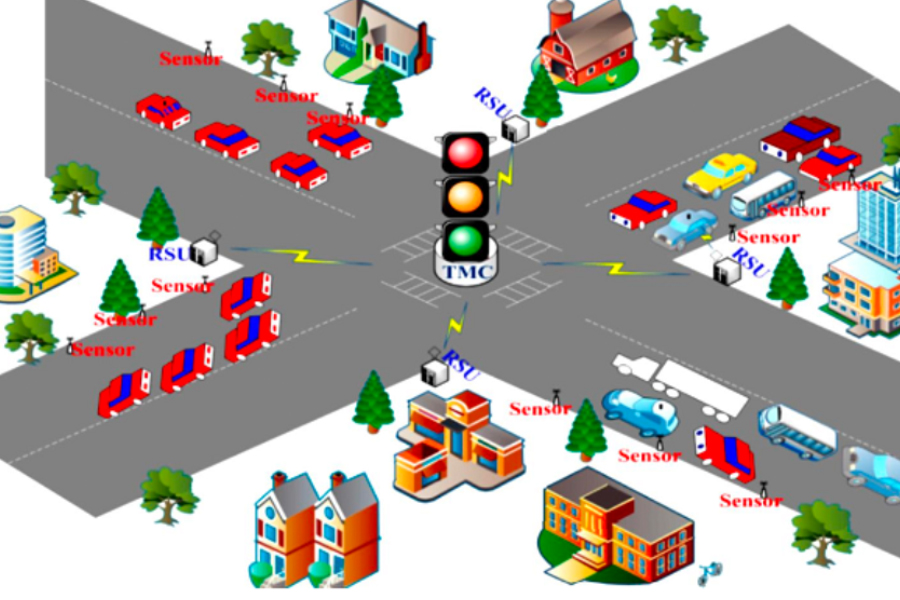Traffic management systems are a great way to help manage traffic, keep drivers safe and enhance the flow of traffic through a given area. This system can be as simple as lane markings and signs or more advanced with cameras, loop detectors and message boards. This article will discuss the advantages of using a traffic control system and why it’s beneficial for any business or organization.
1. Improved Traffic Flow:
Traffic managing systems are designed to help improve the flow of traffic by regulating the speed and direction of vehicles, ensuring that they move smoothly through intersections and other areas with high volumes of traffic. The most common examples include:
-
Traffic lights – These devices use red, yellow, and green lights to direct drivers when it’s safe to proceed through an intersection or turn onto another road. They’re often used in conjunction with signs that tell drivers what they can expect at each signalized intersection (e.g., “Right turn only”) or where there’s no signalized intersection at all (e.g., stop signs).
-
Signs – These signs can be placed along roadsides for warning purposes (e.g., “Watch for deer crossing ahead”), as well as for guidance purposes (e.g., “Turn left on Main Street”). They may also give information about upcoming hazards such as construction zones or school zones where children might be present near school hours; thus helping reduce instances where drivers become distracted while driving because they’re not paying attention due to being distracted by something else instead
2. Improved Safety:
-
Reduced risk of accidents. Traffic management systems can help reduce the risk of accidents by keeping vehicles from colliding with each other, pedestrians, and other objects.
-
Reduced risk of injuries. Accidents involving heavy freight vehicles can cause serious injuries or even fatalities if they occur at high speeds on highways or roads where there are no traffic control systems in place to prevent them from happening in the first place.
-
Reduced risk of fatalities: Traffic systems also help prevent vehicular deaths by ensuring that motorists drive carefully under all conditions (e.g., rainy weather) so as not to cause accidents that result in serious harm or death to themselves or others nearby their vehicles’ path
3. Reduced Travel Time:
These systems reduce travel time by allowing drivers to reach their destination quicker, which means they spend less time sitting in traffic and more time doing what they want to do.
4. Reduced fuel consumption:
Traffic systems also help reduce the amount of fuel that vehicles consume. This is because they allow drivers to travel at a steady speed and avoid sudden braking and acceleration, which leads to less wear and tear on their vehicles’ engines.
5. Reduced Vehicle Emissions:
Reduced emissions from vehicles, including those that idle and those that are not idling. The reduction in emissions is because traffic control techniques reduce the number of vehicles idling at red lights and intersections, which reduces fuel consumption as well as air pollution.
6. Reduced Roadway Costs and Increased Efficiency:
Reduced traffic congestion. Traffic control plans reduce the amount of time that vehicles are idling at intersections and waiting for their turn to proceed through an intersection. It results in reduced fuel consumption, which in turn reduces emissions and improves air quality.
7. Detour management and real-time traffic information:
Traffic management plans can be used to manage detours in real time. When a road is closed, traffic control systems provide information about alternate routes and estimated travel times on those alternate routes. It allows drivers to choose their route based on what they know about their driving habits, how long it will take them to get there and how much money they’re willing to spend on gas or tolls.
8. Improved Emergency Response Time:
The ability to monitor traffic conditions in real-time can be a huge help to emergency responders. It is especially true when it comes to managing traffic flow during an incident, which can result in more efficient use of resources and improved response time.
In addition, automated systems allow agencies like police departments or fire departments to better coordinate their responses with other agencies such as public works departments when needed.
Conclusion
As you can see, there are many advantages of traffic control systems. This system allows you to keep your employees and customers safe while also making their commute more efficient. They can also help you save money on fuel costs by reducing travel time and emissions, as well as improve emergency response times by providing real-time information about traffic accidents or detours along routes taken by first responders.

